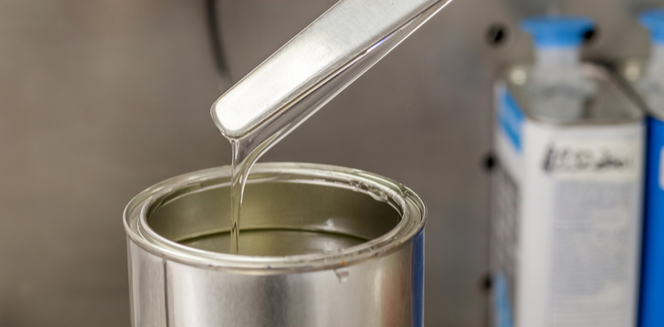Explore the Wide Array of Applications of Vinyl Ester in Different End Use Industries

19 Jan
2022
In the recent few years, polymer based composites have gained huge popularity, owing to an array of advantages like excellent corrosion, fatigue resistance associated with a high specific strength and so on. Vinyl ester is a thermosetting resin that has a wide range of applications in different industries such as construction, automotive, marine, transportation, paint & coatings, and pipe & tanks. The two major applications of vinyl ester resins in the Flue Gas Desulfurization (FGD) are limestone slurry pipes and stack liners, as these are perfect for the usage in flake glass lining systems.
Vinyl ester is produced when any unsaturated vinyl acid such as monocarboxylic acid is used to esterify an epoxy resin. So, basically it is an amalgamated form of polyester resin that has been enlarged by adding epoxy resin. Though its physical properties are very similar to those of polyester resins, vinyl esters are considerably tougher and stronger than polyester and epoxy resins, which is why, these are widely used as a replacement for polyester and epoxy resins. It offers high durability along with great mechanical properties and low viscosity.
However, the environment to which the resins are manifested can limit their performance to an extent. For example, extreme humid weather, especially in tropical regions with more than 90% humidity, can cause damage in polymeric composites performance. Vinyl ester is more resistant to water absorption than other resins due to a more tightly bonded structure, which is why, it is the most preferred resin in such regions.
According to a report published by Allied Market Research, the global vinyl ester market size is registered to reach $2.1 billion with a considerable CAGR from 2021 to 2030. Currently, the Asia-Pacific region is holding the highest market share and is expected to have the fastest growing market during the next few years.
But unfortunately, the outbreak of the COVID-19 pandemic led to hamper the growth of the market. The pandemic caused temporary closure to all resin production hubs. It also implemented travel restrictions across the world, due to which, the whole supply chain were disrupted, transportation costs were increased and shipping was delayed. Also, manufacturers faced a lot of challenges due to shortage of labor force.
Nevertheless, the vinyl ester market is back on track with the benefits coming from increased infrastructural investments. There is a huge demand for vinyl ester in the chemical and water and wastewater treatment end use sectors, which in turn, is driving the growth of the vinyl ester market globally. Environmental regulations on harmful emissions have boosted the demand for vinyl ester for FGD systems even more. With this drift on board, the global vinyl ester market is anticipated to assemble greater prospects and exponential growth in the near future.

Koyel Ghosh
Author’s Bio- Koyel Ghosh is a blogger with a strong passion and enjoys writing in miscellaneous domains, as she believes it lets her explore a wide variety of niches. She has an innate interest in creativity and enjoys experimenting with different writing styles. A writer who never stops imagining, she has been serving the corporate industry for the last five years.
Avenue: Entire Library membership of Allied Market Research Reports at your disposal
- Avenue is an innovative subscription-based online report database.
- Avail an online access to the entire library of syndicated reports on more than 2,000 niche industries and company profiles on more than 12,000 firms across 11 domains.
- A cost-effective model tailored for entrepreneurs, investors, and students & researchers at universities.
- Request customizations, suggest new reports, and avail analyst support as per your requirements.
- Get an access to the library of reports at any time from any device and anywhere.
Related Post
-
How are Submarine Cables Transforming Global Connectivity with Enhanced User Experience?
-
Endoscopy Procedures: Transformations in Techniques and Applications
-
AI-Powered Video Analytics: How the Product Actually Works for enterprises
-
Painting Robots: Transforming Precision Coating and Creative Applications
-
Innovations in Pharmacovigilance Systems Advancing Patient Safety
-
Understanding Edge Security: Keeping Data Safe Near the Source
-
Exploring the Use and Advancements of 3D Laser Scanners in Professional Applications
-
Reinforcing Industrial Controls with Smarter Tools and Training








